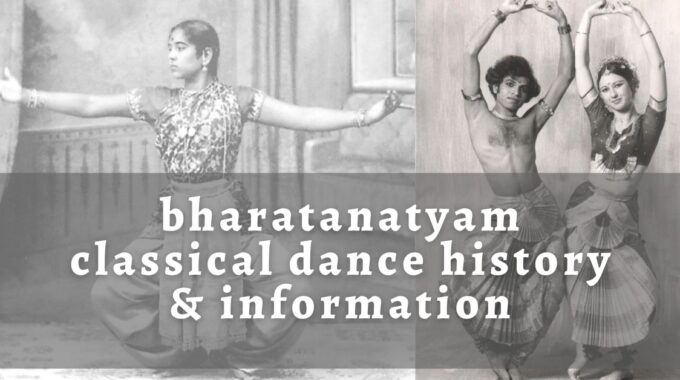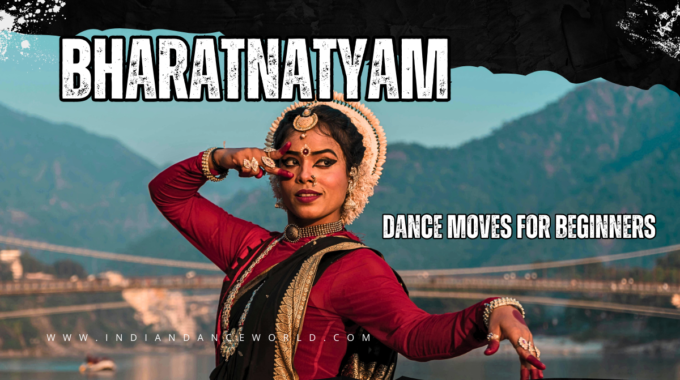Weight loss is challenging for many. When it comes to losing weight exercise plays a…

Bharatanatyam classical dance history & information
India’s oldest or most significant classical dance form is Bharatanatyam, if we talk about Bharatanatyam history it may be discovered back to the ‘Natya Shastra’, an ancient Sanskrit text body of performance arts. It is considered to be date in between 200 BCE and 200 CE. Bharatanatyam was evaporation in the state of Tamil Nadu. Mainly this dance form is aired or developed by devadasis, but at the time of its beginning, it doesn’t have much respect because of the reason behind originated devadasis. But at the start of Twentieth-century again established with krishna lyer or rukmany devi efforts. This Indian classical dance form has two parts or it can be complete with both parts. The first is dance or the second is acting. Dance is performed with both that has included pleasure, emotion, or fictional expression.
Bharatanatyam History
Bharatanatyam is one of the most seasoned and most prevalent types of traditional move that started in the Tanjore area in Tamil Nadu in South India. The cause of this dance form can be followed by the sage Bharata Muni’s Natyasastra. This dance form used to be educated by Nattuvanars (dance masters/instructors) and was initially polished by a gathering of sanctuary artists called the Devadasis who dance normally during significant celebrations, services, and furthermore at the season of love in sanctuaries. Bharatanatyam declined under the British frontier rule in India however was later restored by Rukimini Devi Arundale and E. Krishna Iyer. They two were artists just as activists. Rukmini Devi Arundale set up a social institute called Kalakshetra (which means heavenly royal residence of expressions) to resuscitate the customary specialties of India. To see some video clasps of Bharatanatyam, look at the exhibition of Rajashree Warrier, an outstanding artist, and Carnatic music (old-style music of South India) vocalist. Her exhibitions – Neelakkarmukil Varnan, Marulu Minchera, Gummana Karayadire, and Jo Achyuthananda are stunning to watch! Performing craftsmen of different nations likewise come to India to learn Bharatnatyam. As of late, I viewed a lovely piece by Nikolina Nikoleski, a Croatian artist, who took in the craftsmanship in India at the popular Bharata Kalanjali School.
- Bharatanatyam History in depth (information)
Natya Shastra is credited to the old researcher Bharata Muni, and its initially complete aggregation is dated to between 200 BCE and 200 CE, but appraisals fluctuate between 500 BCE and 500 CE. The most considered variant of the Natya Shastra content comprises of around 6000 sections organized into 36 chapters. The content, states Natalia Lidova, portrays the hypothesis of the Tāṇḍava move (Shiva), the hypothesis of rasa, bhāva, articulation, motions, acting methods, essential advances, and standing stances—which are all pieces of Indian traditional dances. Dance and execution expressions express this old text, are a type of articulation of otherworldly thoughts, ideals, and the quintessence of sacred texts
More straightforward verifiable references to Bharatnatyam are found in the Tamil legends Silappatikaram (~2nd century CE) and Manimegalai (~6th century). The antiquated content Silappatikaram incorporates an account of a moving young lady named Madhavi; it depicts the move preparing routine called Arangatrau Kathai of Madhavi in refrains 113 through 159. The carvings in Kanchipuram’s Shiva sanctuary that have been dated to the sixth to ninth century CE propose Bharatanatyam was an all-around created execution craftsmanship by about the mid-first thousand years CE. A renowned case of the illustrative model is in the southern door of the Chidambaram sanctuary (~12th century) committed to the Hindu god Shiva, where 108 stances of the Bharatnatyam, which are additionally depicted as karanas in the Natya Shastra, are cut in stone. A considerable lot of the antiquated Shiva molds in Hindu sanctuaries are the same as the Bharata Natyam move presents. For instance, Cave 1 of Badami cavern sanctuaries, dated to the seventh century,[30] depicts the Tandava-moving Shiva as Nataraja. The picture, 5 feet (1.5 m) tall, has 18 arms in a structure that communicates the move positions masterminded in a geometric pattern. The arms of Shiva express mudras (representative hand gestures), that are found in Bharatanatyam.
Devadasis, hostile to dance development, provincial boycott, and the decrease
Some frontier Indologists and present-day creators have contended that Bharatanatyam is a relative of an old Devadasi (truly, worker young ladies of Deva sanctuaries) culture, recommending a verifiable root back to between 300 BCE and 300 CE. Present-day grant has scrutinized this hypothesis for the absence of any direct literary or archeological proof. Memorable models and messages do portray and extend moving young ladies, just as sanctuary quarters are devoted to ladies, yet they don’t state them to be concubines and whores as claimed by early frontier Indologists. As per Davesh Soneji, a basic assessment of proof recommends that prostitute moving is a marvel of the cutting edge time, starting in the late sixteenth or the seventeenth century of the Nayaka time of Tamil Nadu. As indicated by James Lochtefeld, Bharatanatyam stayed restrictive to Hindu sanctuaries through the nineteenth century, just in the twentieth century showing up in front of an audience outside the sanctuaries. Further, the Maratha leaders of Tanjore disparaged and contributed to Bharatanatyam.
With the entry of the East India Company in the eighteenth century, and British frontier rule in the nineteenth, numerous old-style Indian move structures were scorned and debilitated, and these exhibition expressions declined. Christian ministers and British authorities displayed “nautch young ladies” of north India (Kathak) and “devadasis” of south India (Bharatanatyam) as proof of “mistresses, degraded sensual culture, servitude to symbols and clerics” convention, and Christian teachers requested this must be quit, propelling the “counter move development” in 1892. The counter-move camp blamed the move structure as a front for prostitution, while Pentecostals scrutinized the developed frontier chronicles.
In 1910, the Madras Presidency of the British Empire and through prohibited sanctuary moving, and with it the Bharatanatyam custom inside Hindu sanctuaries.
Post-provincial restoration
The 1910 boycott activated amazing challenges against the stereotyping and dehumanization of sanctuary dancers. The Tamil individuals were worried that a memorable and rich move custom was being misled under the reason of social change. The old-style craftsmanship evangelist, for example, E. Krishna Iyer, an attorney and somebody who had taken in the Bharatanatyam move, scrutinized the social separation and the expected association, inquiring as to why prostitution needs long stretches of learning and preparing for execution expressions, for example, the Bharatanatyam, and by what method can slaughtering execution expressions end any shades of malice in general public? Iyer was captured and condemned to jail on charges of patriotism, and while serving out his jail term influenced his individual political detainees to help Bharatanatyam.
While the British pioneer government authorized laws to smother Bharatanatyam and all Hindu sanctuary moves, some from the West, for example, the American artist Esther Sherman moved to India in 1930, learned Indian old-style moves, changed her name to Ragini Devi, and joined the development to spare and resuscitate Bharatanatyam and other old move expressions.
The Indian autonomy development in the mid-twentieth century, as of now in advancement, turned into a time of social age and started an exertion by its kin to recover their way of life and rediscover history. In this time of social and political disturbance, rather than Bharatnatyam getting to be wiped out, it extended out of Hindu sanctuaries and was resuscitated as a standard move by Bharatnatyam specialists, for example, Rukmini Devi Arundale, Balasaraswati, and Yamini Krishnamurti. They advocated and played out the Pandanallur (Kalakshetra) and Thanjavur styles of Bharatanatyam, individually. In the late twentieth century, Tamil Hindu transients reintroduced the Bharatanatyam customs of sanctuary moving to British Tamil sanctuaries.



